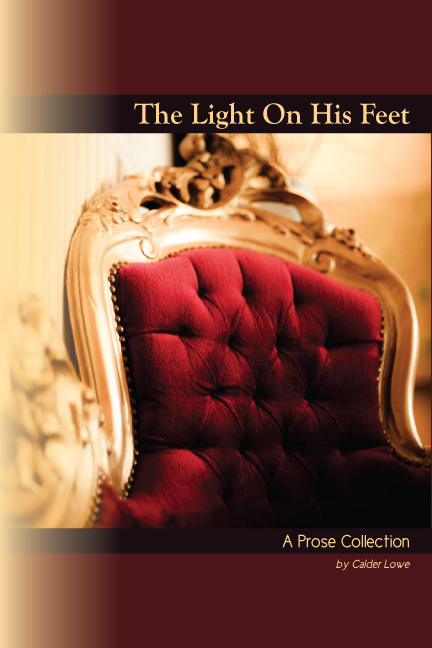by Maria Terrone
Ashland Poetry Press c2006, 78 pages
ISBN: 0-912592-60-5
A Review by Andrew Kaufman
The celebrated 137th psalm–turned into a hit single three decades ago by Bob Marley, among others–asks the haunting question: “They that carried us away captive required of us a song…of mirth, saying, Sing us one of the songs of Zion. [But] how shall we sing the Lord’s song in a strange land?” To go beyond a literalist reading of this verse is to realize that all of us, as exiles from Eden as well as Zion, are “strangers in a strange land” striving, in our various recesses of consciousness, to revive within us a lost paradise of revelations and wonders.
The strengths of A Secret Room in Fall, Maria Terrone’s second volume of poetry and co-winner of the McGovern Prize, derive in large part from the unforeseeable, shifting ways many of these poems address the same question as the psalmist–not as a superimposed conceit, but seemingly by way of the associative processes that are the source of all authentic poetry, and which generate as much surprise for the writer as the reader. These poems most often derive their force and tension from being set at the intersection between various forms of captivity or constraint, and a type of higher freedom that is accessible not through politics but by way of imagination and art. The poem “Artist ‘Anon,'” divided into four, subtitled sections, begins with “The Embroiderer of the Emperor’s Robes”:
Summoned as a boy, he stays alive
in the Forbidden City by weaving
memories with the silk of his mother’s hair,
green thread of mountain mornings.
I squint before its dazzle,
searching for the old, conscripted tailor.
He hides, a bent shadow
on the retinue’s fringe, spent eyes
narrowing to the eye of his needle.
Terrone’s tailor, “conscripted” since boyhood, and now a “bent shadow,” or captive of old age, has “stay[ed] alive” not just physically, but in a more profound sense, “by weaving/ memories with the silk of his mother’s hair,/ green thread of mountain mornings.” Centuries later he lives on in the “dazzle” of the embroidery before which the poet “squints.” Even as the conscripted tailor narrows his “spent eyes” “to the eye of his needle,” the needle’s eye opens to encompass “the silk of his mother’s hair,/ [and] green thread of mountain mornings.”
Quite different yet parallel to the tailor is the “Exiled sailor” in another section of this poem, “lassoed/ by deck rope, tossed by anger’s maelstrom,” who, “when sunk in loneliness…conjures wife and son/ on bone…the homesick heart/… guid[ing] the improbable hand.” This poem’s final section presents an “immigrant seamstress, “a girl whom steerage/ nearly tore to tatters[,] all the doors…locked and exits blocked/ in her new country of sorrow.” “[I]n waning light, she bends/ to stitch ten thousand jet beads/ onto this black opera cloak,” as memory and imagination take her from her drudgery:
Unfurled on the scarred workbench,
it reminds her of the starlings–
the way hundreds, flashing iridescence
would swoop down, then settle,
on the rocky fields back home.
Parallel to this, in “A Poet in the Custom House” the title figure is trapped in his day job, at “work in a civic temple on a tongue/ of land that speaks the Babel/ of ivory tusks, bolts of silk, cinnamon…each item to be weighed,/ counted, and assessed in the definitive language/ of ledgers…” Yet his reveries free him from the custom house to “wander across [the] Bosporus/ of Time”:
Yesterday, a crystal vial released
a musky night I’d thought I’d stoppered…
On breaks, I need to gaze on the black,
opaque sea, breathing deeply.
But then another ship appears,
bearing poems I can’t appraise
among its dense, resplendent cargo.
Captivity, constraint, and the imagination’s capacities to escape these take yet a different form in the book’s opening poem, a deft sonnet entitled, “The Egyptian Queen Gives Death the Slip.” Missing from her tomb, which is on special exhibit in a museum, the queen still taunts the viewer and reader:
Let Death play solitaire,
or else play with you, his eternal, stinking
game of boredom. That’s not for me. I’m everywhere
and nowhere, which is why you found my casket bare.
In “The Distance Between Trees,” the artistry of a famous photographer reveals “branches scratching out/ their unsteady calligraphy” and the heightened colors of leaves that “seem to hover like stoplights,” transforming the surrounding, banal reality, in which “It’s the mid-sixties,/ suburban Connecticut, and it’s raining.” The poem’s title turns out to refer not to spacial distances, but to the imaginative distance between ways of seeing the same trees. This itself comes to illuminate the distance between the mind’s captivity and the imagination’s capacity to slip from its shackles.
“For Blanche, Who Named the Colors” begins,
“Praise Blanche, she lived alone
in a ground-floor flat
but dwelled in kingdoms
of Venetian Marble and Antique Pearl.
Pondering colors for the paint company,
she discovered each one’s soul
and gave them their names…
It is not merely unity and choice of theme, but the resonance and surprise of Terrone’s writing that makes this a terrific book. In the above passage, see how “kingdoms/ of Venetian Marble and Antique Pearl” uses its palace-based metaphors to convey the more profound sense of “kingdoms,” yet without leaving the “paint company.” See how “gave them their names” resonates in a thoroughly original way with Adam in Eden, naming the animals, or how “discovered each [color’s] soul” achieves a power and freshness that calls to mind Rimbaud’s “Vowels” as he named their colors.
What makes A Secret Room in Fall this convincing is the sense that the author has not consciously imposed these themes on her work, and perhaps not even articulated them to herself, but arrived at them as she strove to write the best and truest poems she could, word by word and image by image. By way of Maria Terrone’s inspired, well-crafted command of metaphor, and the subject matter to which this has led her, A Secret Room in Fall delineates the only true escape routes from captivity in the various Babylons of the mind and soul.
Andrew Kaufman in the author of Earth’s Ends and The Cinnamon Bay Sonnets. He teaches at SUNY Purchase. Please visit http://andrewkaufman.wordpress.com/




